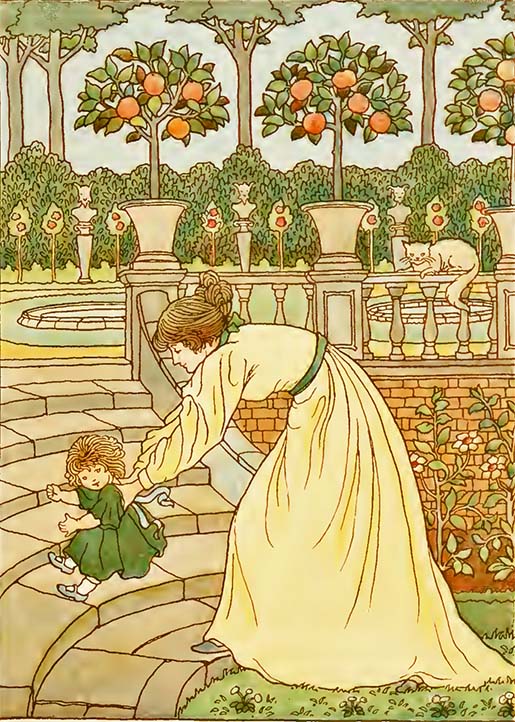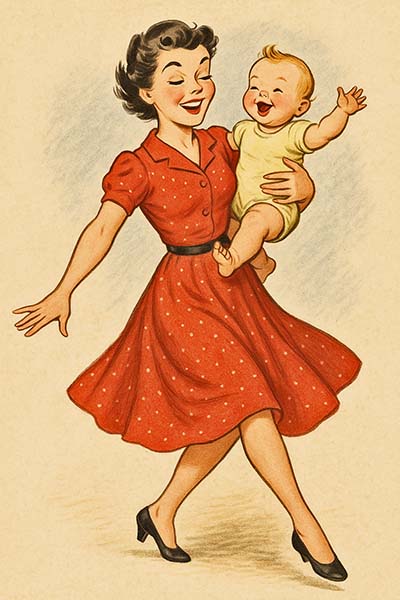Dance a Baby Diddy
Dance a baby diddy;
What can Mammy do wid'e?
Sit in a lap, give it some pap,
And dance a baby diddy.

Full Version:
Dance a baby diddy;
What can Mammy do wid’e?
Sit in a lap, give it some pap,
And dance a baby diddy.
Smile, my baby bonny;
What will time bring on’e?
Sorrow and care, frowns and grey hair,
So smile, my baby bonny.
Laugh, my baby beauty;
What will time do to ye?
Furrow your cheek, wrinkle your neck,
So laugh, my baby beauty.
Dance my baby deary,
Mother will never be weary,
Frolic and play, now while you may;
So dance, my baby, deary.
Origins
This rhyme first appeared in print in the 19th century, but it was already being sung in nurseries long before that. James Orchard Halliwell included it in his Nursery Rhymes of England (1840s), and later collections gave slightly different spellings such as “Dance a babby diddy” or “Danty baby diddy.” These shifts reflect dialect—words like wid’e (“with you”) or on’e (“on you”) echo the sound of local speech rather than standardized English.
Meaning
The word “diddy” is especially interesting. In some contexts, it was a baby-talk word for feeding or milk, while “pap” referred to soft food made for infants. So the rhyme isn’t just about dancing—it ties rocking, bouncing, and feeding into one little verse that mothers could use while caring for their babies.
At its heart, Dance a Baby Diddy is a dandling song—meant to be sung while rocking a child on the knee. Each stanza opens with an action (“Dance,” “Smile,” “Laugh”) and gently layers on reflection about what life brings. The lines about “frowns and grey hair” remind us that childhood joy is fleeting, while the mother’s voice offers comfort: “Mother will never be weary.” It’s equal parts lullaby and life lesson, mixing playfulness with a trace of bittersweet wisdom.
Variants
Several versions survive.
-
In one, the opening runs: “Come sit on her lap, theart rosy and fat, / Dance a babby diddy.”
-
Another, printed in Harry’s Ladder to Learning (1850), uses “Danty Baby Diddy” in place of “Dance.”
-
Some shorter versions only keep the first stanza, which may have been easier for quick bouncing games.
Despite the variations, the rhythm is always lilting—perfect for rocking or knee-bouncing.
Songs like this were part of everyday nursery life in the 18th and 19th centuries. They weren’t teaching rhymes or riddles, but simple ways to soothe and amuse infants while passing the time. The imagery is plain: mother, baby, lap, food, play. But behind the simplicity lies a rhythm that could settle a child and strengthen the bond between parent and child.
Artists and publishers kept the rhyme alive. Victorian illustrators like Francis Donkin Bedford produced lithographs with mothers dancing babies on their knees, and 20th-century song collections recorded it alongside better-known lullabies. Even today, it turns up in modern children’s media — BabyTV released a song version in 2006, showing just how durable it is.


